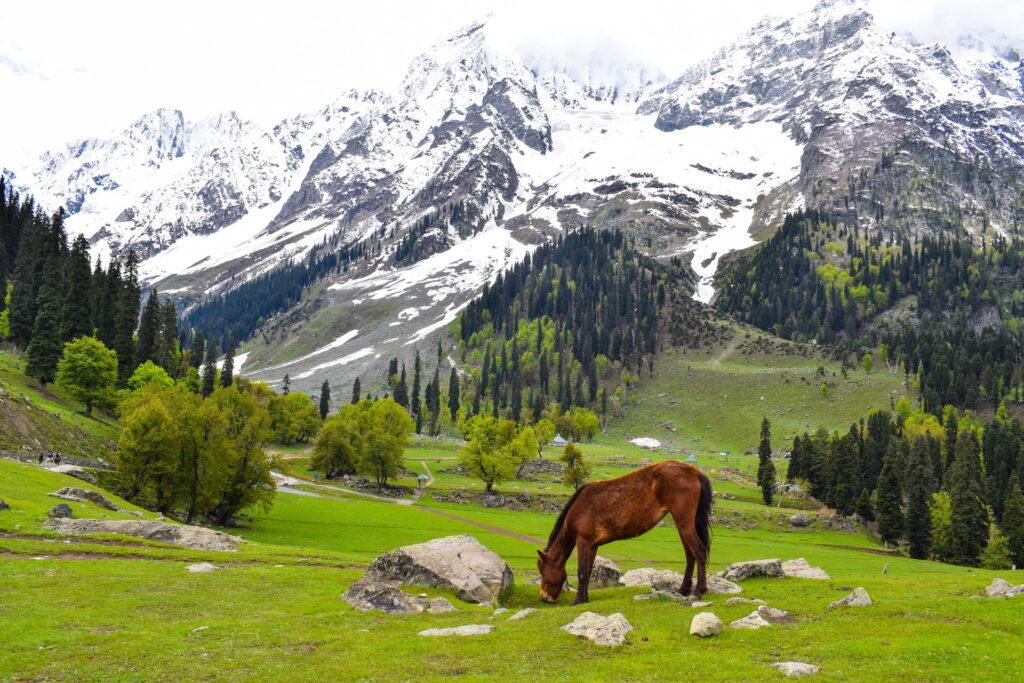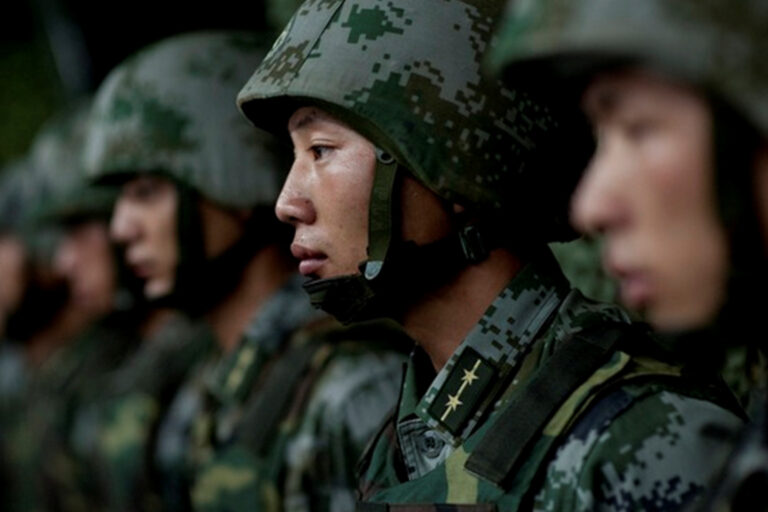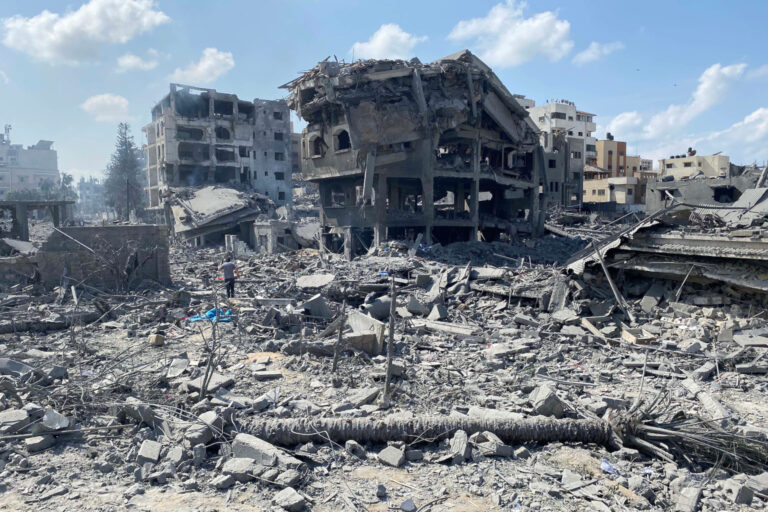Kashmir and the Future of South Asia edited by Sugata Bose and Ayesha Jalal examines the Kashmir crisis from a people-centered approach using a framework of state sovereignty and national security. The authors use the Kashmir crisis to illustrate how internal wars of partition continue to haunt South Asia as a result of its colonial histories. In the book’s ten chapters, Bose and Jalal bring together academic luminaries of South Asian Studies and notably showcase underexplored angles of the Kashmir crisis and the voices of those directly impacted.
Since India’s independence from Britain in 1947, India and Pakistan have occupied Kashmir, the northernmost region of South Asia, and curtailed the freedoms of Kashmiris. The terms of the British transfer of power left 550-plus princely states including Kashmir with the choice to join either India or Pakistan or to remain independent. However, Kashmir’s last king Hari Singh initially leaned toward independence, but the intrusion of pro-Pakistani rebels in Kashmir caused him to join India through the Instrument of Accession (IA) in October 1947.[1]
The terms of the IA forced India to dispatch soldiers in Kashmir to fight against the pro-Pakistani forces, immediately triggering the first Indo-Pakistani war in 1947. The United Nations (UN) helped arrange a ceasefire in January 1949 to end the war.
The ceasefire divided Kashmir between the two countries, giving India roughly two-thirds control of the disputed territory and Pakistan the remaining one-third.[2] The rule of India and Pakistan over Kashmir has hindered a plebiscite in Kashmir, which the UN recommended in its 1948 and 1949 resolutions.[3] The anti-plebiscite standing of both countries denies the self-determination rights of the Kashmiri people.
Bose and Jalal’s introductory chapter explores the Muslim rebellion in Kashmir and how India has whittled down the special political status of Kashmir since 1954. The rebellion by Kashmiri Muslims dates back to the 1930s against the Hindu dynasty Dogra (1846-1947) and has continued to resist India’s governance following the integration of Kashmir with the country in 1947.[4]
The IA incorporated Kashmir into India on the basis of limited Indian intervention in Kashmiri domains of defense, communications, and foreign affairs. These provisions were codified into Article 370 in the Indian constitution in 1949. Furthermore, the 1954 Presidential Order of India annexed Article 35A in its constitution to autonomize the constitution of Kashmir.[5] However, the Presidential Order strengthened the intervening power of the central Indian government over the particular domains in Article 370 and empowered it to infringe upon the basic rights of Kashmiris on the ‘grounds of security.’[6] To make matters worse, India’s current ruling party Bharatiya Janata Party (BJP) utilized its majoritarianism in the Indian Parliament to nullify Articles 370 and 35A through a constitutional order on August 5, 2019.[7] Bose and Jalal reason that the BJP government’s move is an assault to the federalism and democracy of India and will cultivate a sense of alienation instead of emotional attachment to the Indian Union.
On the day of annulling these Articles, India imposed a tight lockdown in Jammu and Kashmir—the Indian-controlled portion of the territory—to prevent protests. In chapter nine, Niya Shahdad depicts the terrorization of civilians amid the lockdown. Shahdad documents that Kashmiris suffered from mass arrests and massive military mobilization, complete cutoff of communication and internet, and rumors of war between India and Pakistan.
Several chapters of the book narrate the miserable experiences of the people of Kashmir through their own voices. In chapter three, Alana Hunt demonstrates how the constant violence in Kashmir pollutes the region’s beauty. Conversing with many Kashmiris through her pro-Kashmir platform, Cups of nun chai,[8] she points out that they live in a ghettoized region where curfew; extrajudicial killings, rapes, and beatings; restriction of movement; and imprisonment deprive the people from normal life. Despite this, Kashmiris nurture their dream of an independent Kashmir. They also treat those Kashmiris fighting against India as ‘freedom fighters’ that are regarded ‘militants’ by Indian government.[9]
Anam Zakaria in chapter four sheds light on the often forgotten victims of the longstanding crisis: the refugees from India’s Jammu and Kashmir and residents in Pakistani-administered Azad Kashmir. The refugees fled to Azad Kashmir either to train as ‘holy warriors’ to liberate Kashmir from India or to evade India’s persecution for insurgency.[10] However, she cautions that the predicament of the refugees remains unchanged in Azad Kashmir, since it is also a tumultuous territory.
Instead of focusing on the state-sponsored violence against Kashmiri people, chapter seven—contributed by Mridu Rai—examines the onslaught of Islamic militant attacks against Kashmiri Pandits (native Hindus of Kashmir) on January 19, 1990. The tragedy triggered an exodus of Kashmiri Pandits from Kashmir to different parts of India. Rai contends that because Kashmiri Pandits favored a united India, this served as a symbolic blow to Hindu-ruled India. Rai inspects constructed collective memories of the exiled Kashmiri Pandits. Their memories reveal they hold anti-Muslim narratives threatening the existence of Hinduism, stemming from their horrific treatment at the hands of the Islamic militants. The retelling pasts of the exiled Pandits are closely interwoven with the attitudes of India towards Kashmiri Muslims. The 1990 events also gave India its desired justification to delegitimize the Kashmiris’ independence movement and expand its military presence in the state of Jammu and Kashmir.
Yet, India and Pakistan’s unceasing coercion and crackdown did not dampen the Kashmiris’ passion for an independent Kashmir. Even Kashmiri diasporas have commenced a transnational independence movement abroad. In chapter eight, Shahla Hussain details how the Kashmiri emigrants in Britain have broadcasted the Kashmir issue and contributed remarkable support by providing emotional solidarity and intellectual directions, strategizing, and undertaking diplomatic efforts since the 1960s. They have also made a stake in British politics through spawning a Kashmir voting bank that has already persuaded the British Labour Party to criticize India and Pakistan for violating human rights in Kashmir.[11]
To placate the outcries of Kashmiris toward India, the central India government is employing its soft power strategy. In chapter five, Saiba Varma unveils the intentions behind India’s soft power policy, arguing that India seeks to change the dialogue to humanitarian care of Kashmiris to cloak its “militarized care – a project of imperialism and state violence” in Jammu and Kashmir.[12] Likewise, in chapter six, Mona Bhan contends that massive development projects in India-administered Kashmir such as railway lines, road, and hydroelectric dams demonstrate India’s attempts to win over the Kashmir people. Through its infrastructure investment and economic aid, India hopes to generate a psychological and economic dependency of Kashmiris on India. However, the Kashmiris’ political consciousness and passion for independence have insulated them against these soft power tactics.
Manipulative and propagandistic narratives have proven ineffective; only a people-centered solution of the Kashmir crisis can bring sustainable peace in Kashmir and, by extension, South Asia in general. Ayesha Jalal in chapter two proposes a reunified and independent Kashmir based on “sovereignty-association”—the acknowledgement of national status and negotiation of a multistate nation.[13] In the context of Kashmir, it would be independent but maintain formal association with both India and Pakistan.[14] Jalal’s sovereignty-association proposal for Kashmir resembles what Quebec residents desire from Canada.[15]
On a similar note, the closing chapter jointly crafted by the book editors Bose and Jalal suggests a normative approach where peace arises when the will of Kashmiris is realized through a plebiscite by India and Pakistan. Thus, Bose and Jalal do not subscribe to the popular solution from the realist view (a state-centered perspective): a continuation of the status quo in Kashmir as the likely and sustainable outcome in Kashmir because neither Pakistan nor India will discard their claim in Kashmir without declaration of war.
Kashmir and the Future of South Asia provides a nuanced understanding of the longstanding Kashmir crisis through various lenses including self-determination, human rights, refugee experiences, plebiscite and insurgency, sovereignty, political divisions and religious disharmony, and regional power dynamics. Most importantly, several chapters amplify first-hand narratives from the Kashmiri people from both Pakistani and Indian sides.
Nonetheless, there are two crucial areas for improvement of the book. First, a chapter on the dynamic of great power politics within the plight of the Kashmiris would serve as a vital addition in the book since the United States, Russia, and China have interests in this conflict. China has controls on some parts of Kashmir, and Kashmir is located in the China-Pakistan Economic Corridor.[16] Russia (then the Soviet Union) facilitated the Tashkent Agreement to end the 1965 Kashmir War. Meanwhile, Russia and the United States currently do not support either India or Pakistan over the Kashmir issue and want a peaceful transformation of the crisis.[17]
Second, Jalal in chapter two needs to clarify how an independent Kashmir would maintain its association with its rival neighbors when she makes her proposal for an independent Kashmir with “sovereignty-association.”
Despite those drawbacks, Kashmir and the Future of South Asia is a useful book for scholars, students, and practitioners with interests in modern South Asian Studies, the Indo-Pakistan rivalry, and post-colonial state formation. The people-centered approach of the book provides an innovative roadmap to understand and explain not only the Kashmir issue but also other similar cases, including the Palestinian crisis.
[1] Mridhu Rai, “Narratives from Exile: Kashmiri Pandits and their Construction of the Past,” in Kashmir and the Future of South Asia, ed. Sugata Bose and Ayesha Jalal (Oxfordshire: Routledge, 2020), 108.
[2] Asad Hashim, “Timeline: India-Pakistan relations,” Al Jazeera, May 1, 2019, https://www.aljazeera.com/news/2019/3/1/timeline-india-pakistan-relations.
[3] Stephen P. Westcott, “The Case of UN Involvement in Jammu and Kashmir,” E-IR, May 29, 2019, https://www.e-ir.info/2020/05/29/the-case-of-un-involvement-in-jammu-and-kashmir/.
[4] Sugata Bose and Ayesha Jalal, “Introduction: Freedom’s Open Wound,” in Kashmir and the Future of South Asia, ed. Sugata Bose and Ayesha Jalal (Oxfordshire: Routledge, 2020), 4.
[5] Aarti Tikoo Singht, “The Article of Contention: Why Article 35A has always been Controversial,” The Times of India, August 5, 2019, https://timesofindia.indiatimes.com/india/why-theres-turmoil-over-article-35a-in-kashmir/articleshow/70526833.cms.
[6] Bose and Jalal, “Introduction,” 2.
[7] Bose and Jalal, “Introduction,” 1-2.
[8] “Cups of nun chai” founded by Alana Hunt in 2010 is a requiem for those Kashmiris killed by Indian armed forces amid the 2010 political upheaval in Kashmir and is a platform to bring out the sufferings and pains of Kashmiris. To know more about the Cups of nun chai,’ follow its website link: https://www.cupsofnunchai.com/
[9] Alana Hunt, “Cups of nun chai: 2010–ongoing 16,” in Kashmir and the Future of South Asia, ed. Sugata Bose and Ayesha Jalal (Oxfordshire: Routledge, 2020), 30.
[10] Anam Zakaria, “The state of Azadi: Voices from Pakistan-administered Kashmir,” in Kashmir and the Future of South Asia, ed. Sugata Bose and Ayesha Jalal (Oxfordshire: Routledge, 2020), 39.
[11] Shahla Hussain, “Kashmiri Imaginings of Freedom in the Global Arenas,” in Kashmir and the Future of South Asia, ed. Sugata Bose and Ayesha Jalal (Oxfordshire: Routledge, 2020), 133.
[12] Saiba Varma, “Affective Governance, Disaster, and the Unfinished Colonial Project,” in Kashmir and the Future of South Asia, ed. Sugata Bose and Ayesha Jalal (Oxfordshire: Routledge, 2020), 54.
[13] Ayesha Jalal, “Kashmir Scars: a Terrible Beauty is Torn,” in Kashmir and the Future of South Asia, ed. Sugata Bose and Ayesha Jalal (Oxfordshire: Routledge, 2020), 14.
[14] Jalal, “Kashmir Scars,” 14.
[15] Clinton Archibald, “Sovereignty-Association,” February 7, 2006, https://www.thecanadianencyclopedia.ca/en/article/sovereignty-association.
[16] Javaid Hayat and Raja Qaiser Ahmed, “The Kashmir Conundrum: Past, Present, and Future,” in Society and Politics of Jammu and Kashmir, ed. Serena Hussain (Cham: Palgrave Macmillan, 2021), 34.
[17] N. Gass and N. Nemeth, “Kashmir Issue and the New World Order,’’ Strategic Studies 19, no. 1 (1996): 14-45, https://www.jstor.org/stable/45182237.




